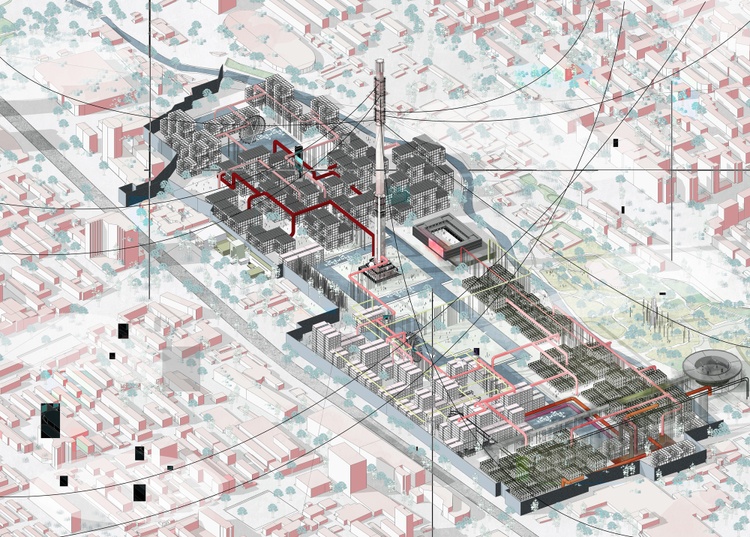Comprehending the Collaborative Process Between Engineers and Designers in Modern Building Projects
The collaborative process in between architects and designers is essential in contemporary building and construction projects, as it balances layout intent with engineering expediency. Discovering these dynamics exposes understandings that could considerably influence task outcomes and general sector standards.
The Significance of Cooperation
The joint harmony in between engineers and designers is vital for the effective understanding of any type of construction task. This collaboration unites distinctive expertise and perspectives, allowing the integration of innovative style with practical design remedies. By collaborating, architects and designers can make certain that a project not just meets visual and practical demands yet also sticks to security, sustainability, and financial constraints.
Collaboration fosters a common vision, facilitating the positioning of objectives and assumptions from the beginning. This placement is vital in resolving potential obstacles and mitigating dangers that could occur during the job lifecycle. A collective approach enables for the reliable appropriation of resources, enhancing both time and price.
The significance of cooperation includes the repetitive process of layout and building, where responses from designers can educate architectural decisions, causing more possible and sustainable layouts. On the other hand, designers can motivate designers to think creatively about exactly how to attain structural integrity without compromising artistic intent. Eventually, the collective connection in between engineers and designers is not merely helpful; it is fundamental to the creation of top notch, practical, and ingenious developed environments that meet the needs of culture.
Interaction Techniques and Devices
Reliable interaction methods and devices are vital for cultivating cooperation between architects and designers throughout the job lifecycle. Establishing clear networks of communication is important to make sure that all group participants are aligned with task objectives, timelines, and responsibilities. Normal meetings, both in-person and digital, give opportunities for stakeholders to review progression, address problems, and make educated decisions.
Utilizing job management software, such as BIM (Building Details Modeling) platforms, enhances collaboration by making it possible for real-time sharing of layout alterations and technological requirements. These devices promote openness, enabling architects and designers to visualize adjustments and evaluate their effect on the total project.
:max_bytes(150000):strip_icc()/Buildingdesigns-GettyImages-912482942-db55b3af711044a3a42ad1040c6711a9.jpg)
Shared Objectives and Task Vision

Establishing shared goals entails open dialogue and a complete understanding of each self-control's payments. Architects typically concentrate on style intent, spatial relationships, and user experience, while designers emphasize architectural integrity, systems functionality, and conformity with policies (cda architects). When these viewpoints are aligned, the result is a cohesive project that follows both innovative desires and technical expediency
Moreover, a distinct project vision cultivates liability amongst staff member, encouraging each participant to take ownership of their role in attaining the desired end result. Normal check-ins and collaborative workshops can additionally enhance this commitment, permitting modifications to be made as the job progresses. Inevitably, a common vision not just boosts teamwork but additionally boosts the top quality of the last deliverable, bring about effective task completion.
The Role of Technology
Leveraging modern technology has actually become important in improving cooperation in between architects and designers. The combination of sophisticated software tools assists in real-time communication and information sharing, enabling teams to work extra efficiently and effectively. Structure Information Modeling (BIM) stands out as a crucial innovation, allowing both architects and designers to develop thorough 3D designs that encapsulate design intent and architectural honesty. This shared aesthetic representation minimizes misunderstandings and streamlines the decision-making procedure.
In addition, cloud-based platforms allow seamless partnership, permitting task stakeholders to access and update job information from anywhere. This fosters a society of openness and accountability, as modifications can be tracked and evaluated in real-time. In addition, mobile applications additional enhance communication, providing on-site teams with immediate accessibility to project specs and updates.
Emerging technologies such as expert system and artificial intelligence are also starting to contribute in anticipating analysis, assisting groups recognize potential problems prior to they occur. Eventually, the function of innovation in architecture-engineering collaboration not only improves operations efficiencies however likewise enhances technology, causing more effective project end results. By accepting these technical advancements, engineers and designers can make certain an extra natural and productive collective procedure throughout the construction lifecycle.
Study in Effective Partnerships
Numerous study show the profound influence of reliable partnerships between engineers and designers on task results. One notable instance is the cooperation on the High Line in New York City, where landscape engineers, engineers, and metropolitan organizers interacted to transform a deserted railway right into a vibrant public park. This multidisciplinary method not only boosted the aesthetic quality but additionally made certain structural safety and security and ecological sustainability.
An additional exemplary instance is the style and building of the Sydney Music Hall. The partnership in between engineer JÃ ¸ rn Utzon and architectural engineer Ove Arup exhibited ingenious problem-solving. Their partnership permitted the renowned shell-like design while resolving complicated engineering difficulties, inevitably resulting in an ageless building masterpiece.
The Burj Khalifa in Dubai even more shows the value of collaborative efforts. cda architects. The combination of style and design experience read the article enabled the project team to accomplish extraordinary elevations while sticking to safety regulations and aesthetic vision
These examples highlight the value of interaction, trust fund, and shared purposes. In today's complex construction environment, such partnerships are here vital to navigating difficulties and providing jobs that satisfy both practical and visionary goals.
Final Thought
In final thought, the collaboration in between designers and engineers is crucial for the success of contemporary construction tasks. Efficient communication strategies, a common project vision, and the assimilation of sophisticated technologies are essential elements that facilitate this collaboration.
Comments on “Why CDA Architects Are Leaders in Architectural Design and Development”